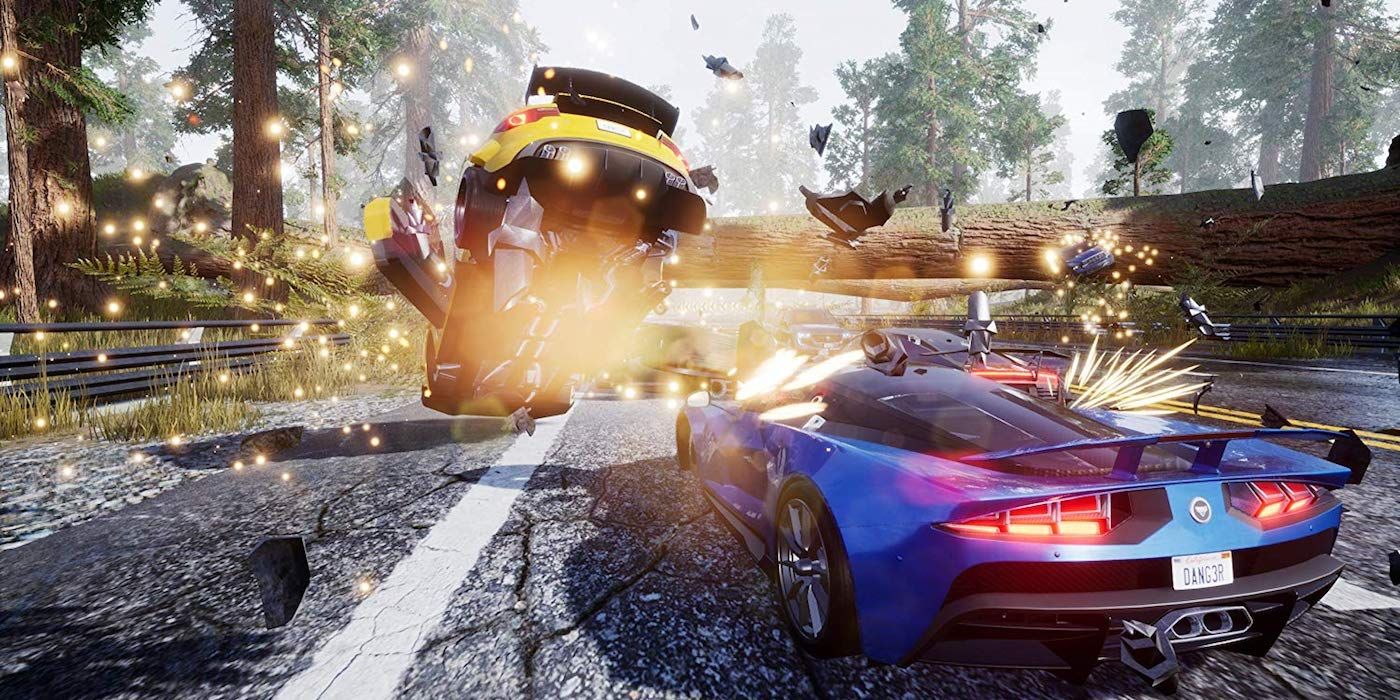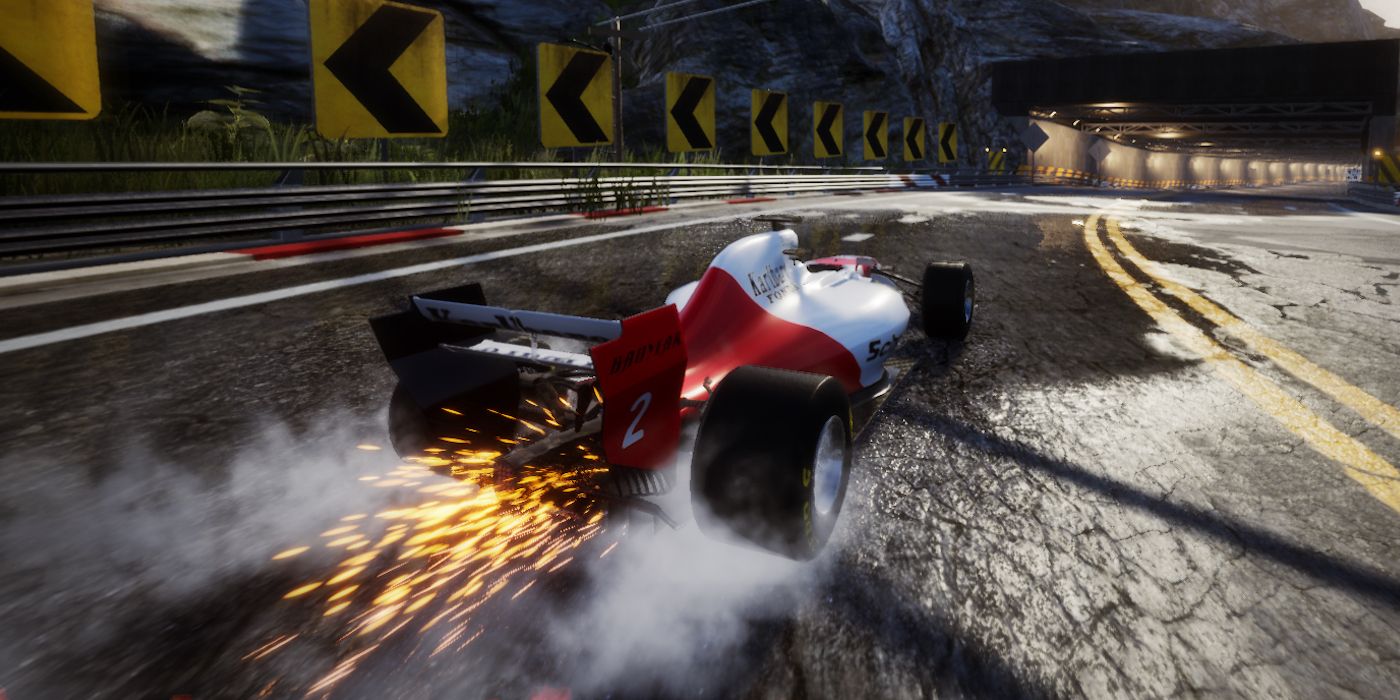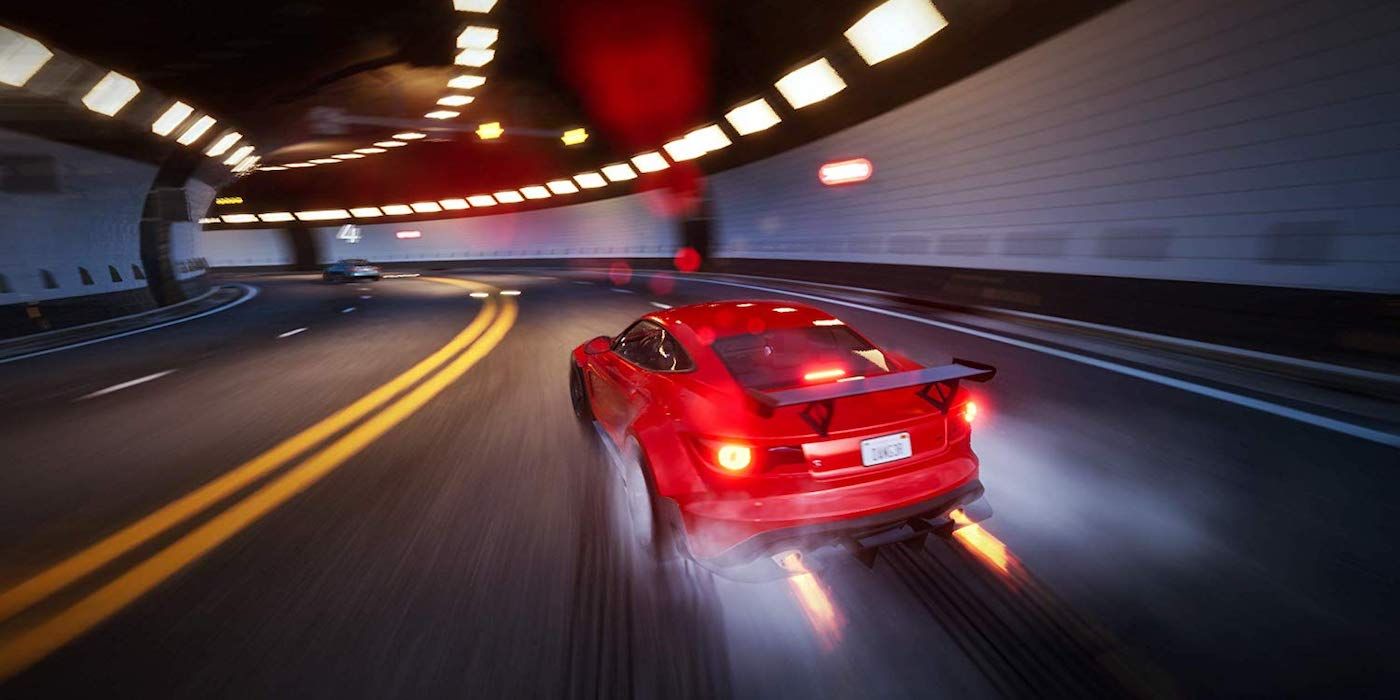The original creators of Burnout successfully bring the action racing genre back to basics with Dangerous Driving, a classic, pure, hardcore racing experience!
There are two types of games; those which allow the player to sit back and relax, and those which force them to lean forward in unbreakable attention. Dangerous Driving is the latter. Three Fields Entertainment have always worn their pedigree on their sleeve; comprised of veterans from Criterion, the team behind the legendary PS2-era arcade racing series, Burnout, TFE is dedicated to making a genuine successor to the venerated franchise using an indie budget and seven-person team.
From the jump, Dangerous Driving is immediately recognizable as a spiritual successor to the classic Burnout games; the menus and interface are startlingly similar to Burnout 3, and many of DD's modes are taken straight from that classic title. From standard races to Eliminator, Road Rage, and Face-Off, Dangerous Driving makes clear its ambitions of dethroning Burnout as the king of high-octane action racing. Does Dangerous Driving succeed in this lofty aspiration? Or does it stall out before the finish line?
Related: 11 Racing Video Games That Could Be Great Movies
The single-player "Dangerous Driving Tour" consists of 69 events, sorted via the six vehicle classes, which start fast and only get faster as the campaign progresses. Fans of classic Burnout will instantly feel at home as the game progresses, as the races intensify, and as the wrecks pile up. Even the slowest cars are still incredibly fast, and triggering boost sends them rocketing forward like a jet engine. The intense motion blur that comes with activating boost might be a bit much for some, but it really sells the staggering sense of speed, and it's tough not to sport a jolly grin while flying down the wrong side of the road at 250 MPH.
This sense of speed is at its strongest during Heatwave events; unlike the majority of events, which encourage ramming opponents off the road to build boost and gain ground, Heatwave prohibits Takedowns and focuses on one thing: speed. In these events, emptying out a full boost meter without losing speed triggers a "Heatwave," which refills the boost meter and – here's the hook – adds two MPH to maximum speed. Winning a race with a boost chain of 20 or more is satisfying beyond belief, and is as innovative as it is entertaining.
The other big game-changer here is Eliminator. The mode functions much the same as in Burnout 3 and Revenge, but with one awesome change: persistent wrecks. Unlike classic Burnout, where a wrecked opponent would disappear, smashed cars in Dangerous Driving remain on the track, causing subsequent laps to be more and more prone to disaster, as it can be incredibly difficult to avoid crashing into some wrecks. Even regular races are affected by this, adding a lot of strategy to routine events; it can be tempting to take out all opponents at every opportunity, but at the expense of a particularly harrowing final lap. In Eliminator, a five lap gauntlet in which the racer in last place gets eliminated, the racetrack ends up looking like a scrapyard by the end, leading to even more outrageous levels of vehicular carnage.
There is no downtime between events beyond brief loading screens. There's no XP, no level-ups, no social aspects (except for requisite leaderboards), and no DLC or microtransactions. There's no fat on these bones, just non-stop action from start to finish. On the other hand, there are a number of blemishes which betray DD's nature as an indie game, developed by a team of seven people. Physics can get a bit wonky at times, particularly in the faster classes, leading to some weird moments where car-on-car combat turns into a spectacle of broken physics. Additionally, car crashes, a hallmark of Burnout, are a bit subdued in Dangerous Driving; beyond tires falling off and doors swinging open, damage modeling is very limited on the cars. Takedowns can still be intense, but frequently lack the punch of the Burnout games of yore.
Visually, there are a couple of cut corners, like the generic font on street signs or repetitive backgrounds on the racetracks, but these minor issues don't impact the pristine gameplay. The framerate is a bit more complicated in that respect; Dangerous Driving runs at 60 FPS on PlayStation 4 Pro and Xbox One X, but only 30 FPS on the base systems. For the most part, PS4 Pro holds that 60 FPS target, but there are moments, particularly while driving through tunnels, which cause the game to freeze for a fraction of a second.
Dangerous Driving isn't perfect, but it has an indomitable spirit, relentless momentum, and a rewarding progression. Multiplayer isn't available at launch, but this omission does little to diminish the kinetic exuberance of Dangerous Driving. In a gaming landscape dominated by open-world sandboxes and microtransaction-driven "live services," Dangerous Driving represents a pure racing experience without peer.
Dangerous Driving releases on April 9 on PlayStation 4, Xbox One, and PC. The digital version retails for $29.99, while the physical version includes 2018's Danger Zone 2 and retails for $39.99. Screen Rant was provided a PS4 review code by the Dangerous Driving team.



